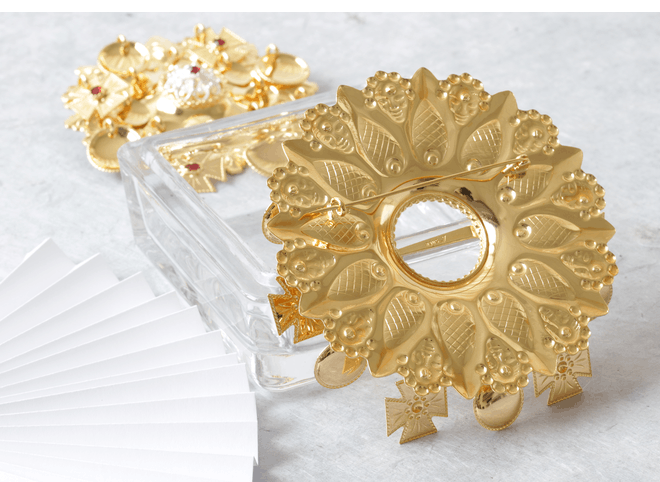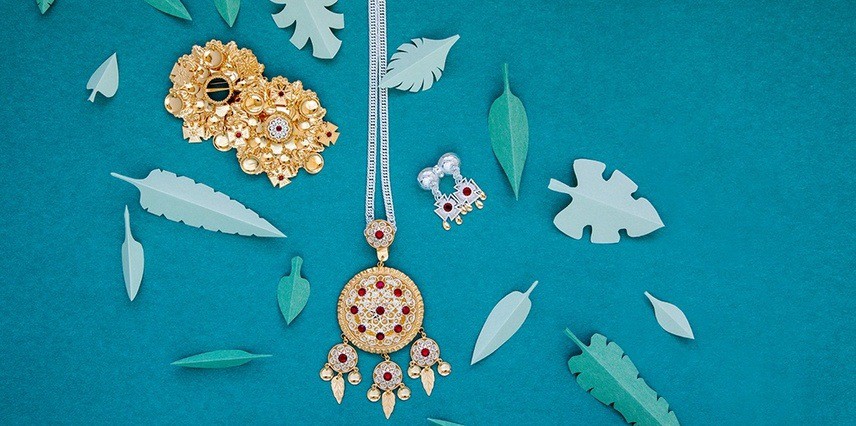
The hidden faces in the brooch
In some of the most glittering brooches there are concealed figures that perhaps you haven't noticed before.

The brooches on the beautiful bunads from various regions in Norway have their origins in a time when symbols played a significant role in everyday life. These symbols had different representations, and were expressed in various ways, connected to both magic and religious interpretations.
If you look at the back of a so-called “ansiktssølje” (face brooch), you will clearly see there is a wreath of face masks. These brooches are also known as Glibb brooches.
Glibb is a term used to describe decorative element features of human or animal masks and originates from pre-Christian times. They could often look scary, with large protruding eyes, a wide nose and large mouth with carnivorous-looking teeth.
Facial figures were not only found on national costume silver but also, for example, on tools, sleds, stave churches and other buildings.
And of course not without reason. These figures had both a magical meaning and a protective function. They scared away the dark and cold forces and paved the way for the light.
Where do face brooches come from?
The face brooches, as we know them today, first appeared in the early 1800s among goldsmiths in Bergen in West Norway. They spread further from here to different parts of the country and have been found in Hallingdal and Numedal located in the southern part of Norway, as well as northwards in Sami areas. These brooches also go by the name 'Vestland brooch' because they are primarily used on national costumes from Western Norway, such as Voss and Hardanger.

Facial motifs are also found on the eyelets for the beautiful Fusa bunad.
Source: Wikipedia
